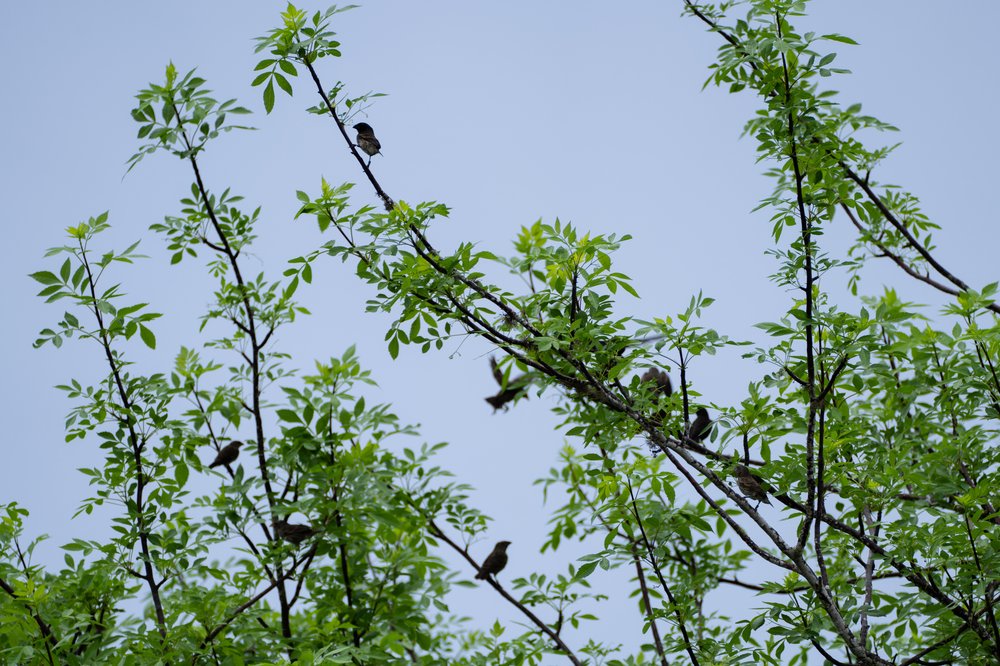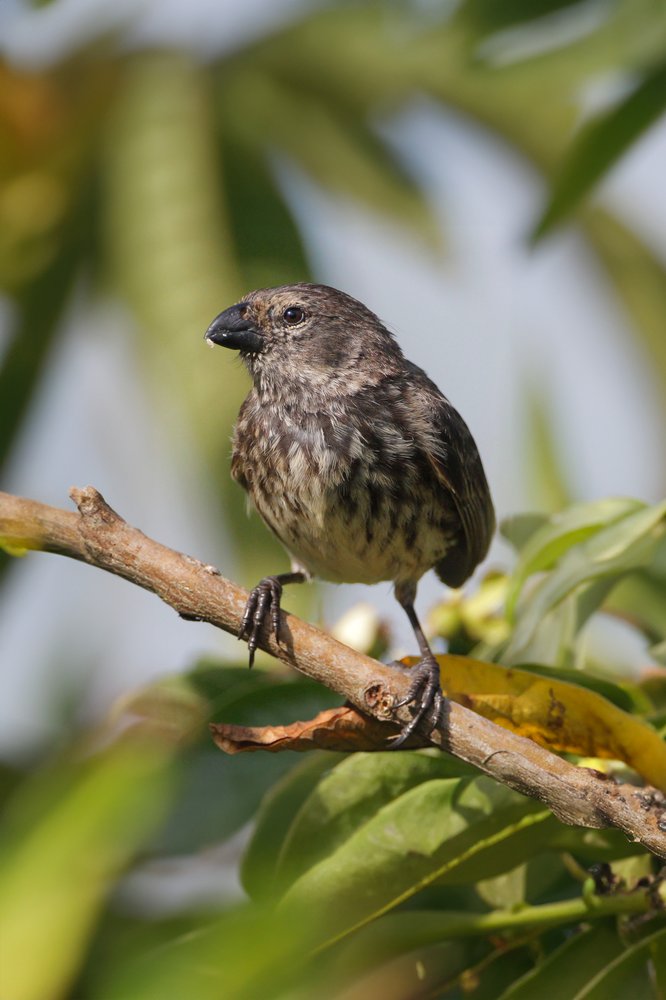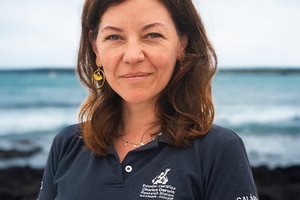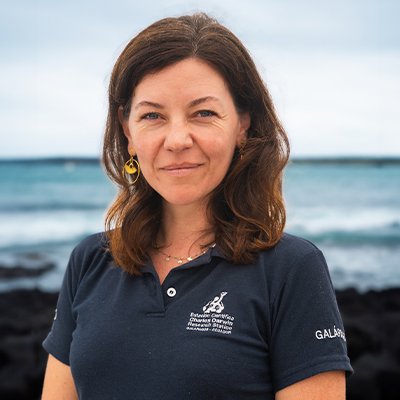510 native finches took their “flight home” to the high and lowlands of Floreana Island in Galapagos as part of the Floreana Island Restoration Project. While releasing the safely held finches from the aviaries took seconds, maybe minutes, CDF collaborating scientist and Director of the Konrad Lorenz Research Center for Behavior and Cognition, Professor Sonia Kleindorfer, explained how this was made possible by more than a decade of planning and pre-work by multiple institutions and inter-disciplinary teams. Sonia is an behavioural biologist at the University of Vienna.

Sonia let’s start with an easy question. What is the Floreana Island Restoration Project?
The Floreana Island Restoration Project is led by the Galapagos National Park and the Galapagos Biosecurity Agency, co-executed by the Jocotoco Conservation Foundation, and supported by other important national and international institutions, including Durrell Wildlife Conservation Trust, Island Conservation, the Charles Darwin Foundation (CDF), and the local community.
This is the largest and most ambitious restoration initiative currently underway in the Galapagos. It aims to realize the vision of an ecologically prosperous and sustainable Floreana through the removal of invasive species and the reintroduction of 12 locally extinct native animal species – including finches.
The control and eradication of invasive species on the island was an important first step before the finches’ release. Can you tell us more?
Black Rats were accidentally introduced to Galapagos centuries ago, and they are highly invasive. This is in part due to their reproductive capacity and ability to forage selecting the most nutritious food. In Galapagos these rodents are responsible for the direct predation of eggs and juveniles of tortoises, land and marine iguanas, land and marine birds, small reptiles, as well as small invertebrates, molluscs and crustaceans, seeds, fruits, buds, rhizomes, stems, leaves, grains. Many of these species have come to collapse, thereby causing other native and endemic species to move elsewhere or, in many cases, come to extinction.
So, the first conservation management action was to implement a program to control rats. This activity took place at the end of 2023, led by the Galapagos National Park, Jocotoco and Island Conservation. But it’s been long in the planning, with the involvement of various institutions. For instance, since 2006, we have been tracking rat tunnels, baited with peanut butter and ink pads, to detect rodent activities. That was how we could ascertain that the rat population was increasing, and how this was negatively impacting the population of finches on Floreana through egg predation.
Why was the safeguarding of the finches important?
The 510 finches released belong to 5 native finch species from both the high and lowlands. All these finch species are essential to flora and fauna flourishing on Floreana, acting as pollinators, seed dispersers, and insect population control. The Medium Tree-finch is especially rare and precious because it's endemic to Floreana Island - it can only be found there and nowhere else in the world. They were kept in managed captivity over the period of rat eradication as a key protection measure.
What’s next now that the finches have been released? How have they been doing following the rat eradication?
170 finches were released into the highlands and 340 into the lowlands, with a few Medium Tree-finches, Small Ground-finches, Medium Ground-finches and Cactus Finches wearing tiny radio transmitters.
Prior to the release of the finches on February 22, 2024, a “sentinel” population of the five-finch species was tagged and re-introduced to their high and lowland habitats. We do this to ensure their survivorship before giving the “green light” to release the rest of the finches.
While the release of the finches was the moment that all the different institutions and conservationists have been waiting for, the monitoring of their survivorship is equally, if not more, important. All are doing well and we haven’t recorded any mortalities since their release which is very positive.
The Konrad Lorenz Research Center for Behavior and Cognition, a core facility of the University of Vienna, is leading the monitoring of these finches upon release using a state-of-the-art drone system developed by Wildlife Drones, which can track up to 40 birds at a time for a period of 15-30 days maximum. This allows the team to measure the success of the restoration and watch these populations re-establish. We then count on visual observation to track their growth and development after this period.
We understand that you have been part of this journey – both directly and indirectly – for more than 20 years! As a biologist, what have you found most interesting?
We have often had the Galapagos Islands referred to as a “natural laboratory”. As a biologist, it has been a privilege to observe and study the sentinel species of the islands. They provide early warning signs to the delicate balance of the islands’ biodiversity and even to human health, as well as demonstrate the interconnectedness of all fauna and flora.
To avoid egg predation by rats, the finches have over the years started to build their nests higher up in the trees. But as the finches build nests higher up, they also became more vulnerable as prey to the native owls. That left the “middle” nests, which unfortunately for the finches provided ideal conditions for the avian vampire flies to lay eggs in the nests. These all meant that nesting success was extremely low.
With the eradication of rats, we observed that young male finches are beginning to build their nests lower in the trees again. While these lower nests would have previously “failed”, the team has noticed an almost-immediate change in the success rate of nests with eggs. As for the owls that were having a feast with the rats, they will no doubt switch to prey such as lava lizards and grasshoppers. Essentially, the removal of rats as a predator has initiated a trophic evolution and ecology of prey with cascading consequences for the biodiversity on Floreana, which is fascinating to observe and document.
This has definitely provided us a peek into the “field life of a biologist”! Any other interesting factoid to share with our readers?
As an organismal systems biologist, I have a research focus on the evolutionary dynamics in birds and parasites. So, it has been interesting to observe that the avian vampire fly, Philornis downsi, has become 26% smaller in size on Floreana over the last 15 years. Specifically, the female abdomen has gotten smaller.

Why is this, especially since the flies seem to be having a field day and decimating the small bird populations of the Galapagos? It appears that the birds, finches included, have pulled a hat trick on the flies.
When the avian vampire flies were accidentally introduced to the islands, we had seen that chicks were dying at around day 10. When there were more flies, the chicks began dying at about day 5. That meant that as a larva, you must pupate sooner. And when you pupate earlier in the life cycle, you are a smaller pupa, and a smaller pupa makes a smaller fly. With a smaller abdomen, the female flies had fewer eggs.
As a result, we are seeing that the Medium Tree Finches have almost doubled in population – from ~2,000 to ~4,000 over the last 15 years.
Looking ahead, the team is extremely excited to look at the change in reproductive success and all other behavioral parameters of Darwin’s finches because of the eradication of the rats and reintroduction of other Darwin’s finch species onto Floreana Island.






